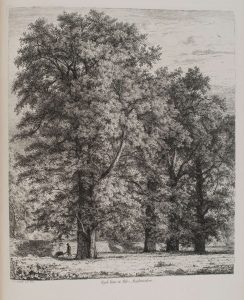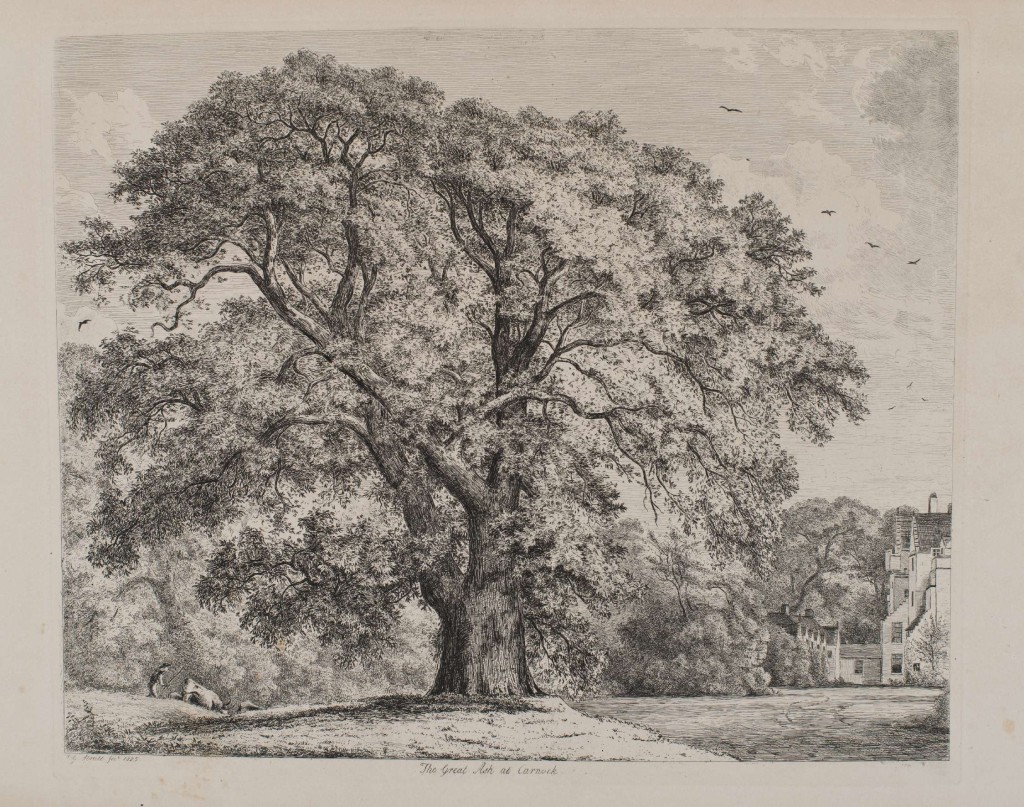
Wych Elms, Renfrewshire. Plate from
Sylva Britannica; or, portraits of forest trees written and illustrated by Jacob George Strutt (1790-1864) published in folio format, 1822.
Copy held by the Library at the Royal Botanic Garden Edinburgh. Photographed by Lynsey Wilson.
I’m always glad of an excuse to take a nosey at some of the content of our Library and Archive collection at the Botanics. Our librarians have such a wealth of knowledge, and I’m very grateful to be able to tap into that.
I recently installed a small display in the John Hope Gateway about ash trees (on show until 14 July), showing items from our Library, Archive and Herbarium, to coincide with our Moving Forward from Ash Dieback project. One of the things I finally got to see ‘in the flesh’ for the first time was Jacob George Strutt’s Sylva Britannica; or, portraits of forest trees, published in folio format in 1822. The large engraving plates are beautiful, so I thought I’d share images of a couple here (though the photographs in no way do them justice).
The health and resilience of trees has been at the forefront of our minds working on the Ash Dieback Project, but other species come to mind when considering how pests and diseases have impacted on trees. For me the one that I think of is the wych elm, ravaged by dutch elm disease in the late twentieth century. This is partly due to my love of E.M. Forster’s Howard’s End in which a wych elm with pig’s teeth in it plays a central role, but also because the Wych Elm Project exhibition was the first exhibition in the John Hope Gateway and one that is remembered by many.
If you’d like to know more about wych elm, and thoughts on what we have learnt when considering new tree health issues such as ash dieback, Max Coleman will be talking on the subject at this weekend’s Book Festival at the Botanics (Saturday, 11am – click here for more details).
Concluding with a beginning, here are Strutt’s opening words to Sylva Britannica:
“Among all the varied productions with which Nature has adorned the surface of the earth, none awakens our sympathies, or interests our imagination, so powerfully as those venerable trees which seem to have stood the lapse of ages silent witnesses of the successive generations of man, to whose destiny they bear so touching a resemblance, alike in their budding, their prime, and their decay.”

